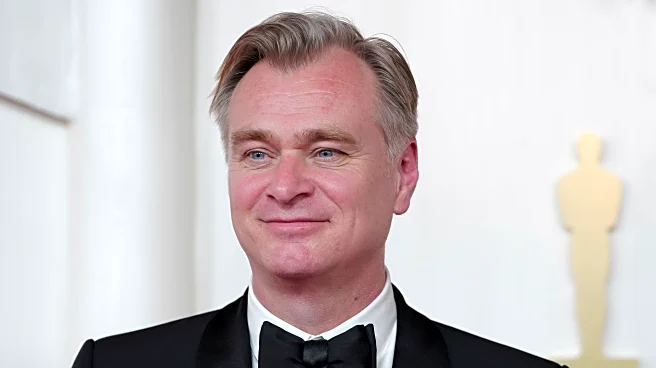What's Happening?
Michael Chiklis, known for his roles in 'The Shield' and 'The Fantastic Four,' has undertaken a significant physical challenge for his latest film, 'The Senior.' The movie portrays the story of Mike Flynt, who became the oldest player in NCAA history at 59. Chiklis, now 62, had to prepare for demanding football scenes, requiring him to be in peak physical condition. His preparation involved a comprehensive strength and conditioning program, including full-body training sessions, pool jogging, and walking 10,000 steps daily. Chiklis emphasized injury prevention and maintaining health and strength, which he considers crucial at his age.
Why It's Important?
Chiklis's commitment to his role in 'The Senior' highlights the increasing demand for actors to perform physically challenging roles, regardless of age. This trend reflects broader societal shifts towards valuing fitness and health in later life stages. The actor's approach to training, focusing on injury prevention and sustainable fitness, offers a model for older individuals seeking to maintain their physical capabilities. It underscores the importance of adapting fitness routines to personal needs and limitations, promoting a healthier lifestyle among aging populations.
What's Next?
As 'The Senior' approaches its release, Chiklis's portrayal of Mike Flynt may inspire discussions on age and athleticism, potentially influencing public perceptions of older athletes. The film could also spark interest in fitness routines tailored for older adults, encouraging more people to engage in physical activities that support longevity and health. Additionally, Chiklis's experience may lead to further opportunities for him to take on roles that challenge age-related stereotypes in Hollywood.
Beyond the Headlines
Chiklis's journey in preparing for 'The Senior' may contribute to broader conversations about ageism in the entertainment industry. His ability to perform physically demanding roles at 62 challenges traditional notions of aging, potentially influencing casting decisions and encouraging more diverse representations of older individuals in media. This shift could lead to more inclusive storytelling, reflecting the varied experiences and capabilities of older adults.











